Two Ladders
Two ladders are propped up against facing walls. The end of the
first ladder is 10 metres above the foot of the first wall. The end
of the second ladder is 5 metres above the foot of the second wall.
At what height do the ladders cross?
Problem
Image

The picture shows two ladders propped against facing walls. The end of the first ladder is $5\text{m}$ above the base of the second wall. The second ladder is $5\text{m}$ above the base of the first wall.
Image
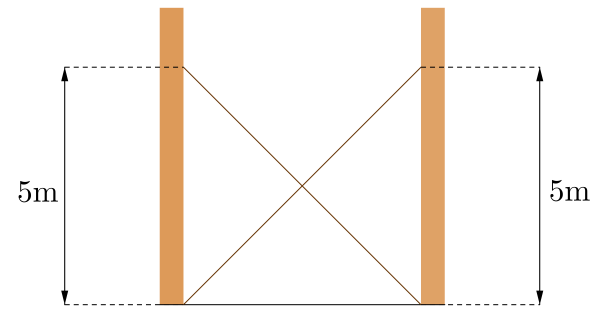
Can you work out at what height the ladders cross?
Are you surprised that we don't need to know the distance between the two walls?
Image
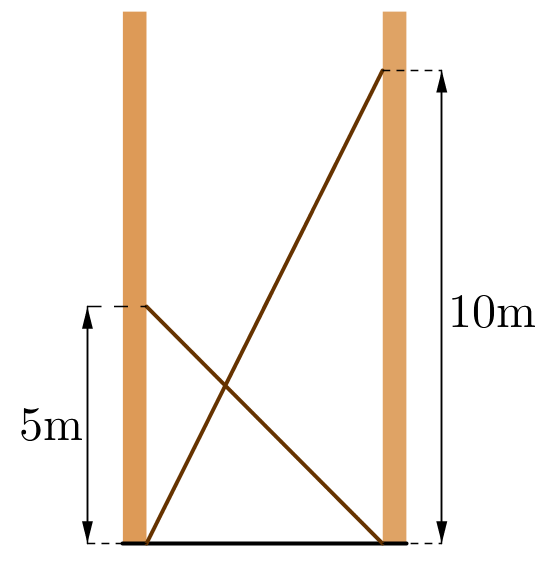
Suppose now the first ladder is $10 \text{m}$ above the base of the second wall, with the second ladder remaining as before.
Can you work out at what height the ladders cross now?
Click below to reveal a diagram that may help you get started:
Image
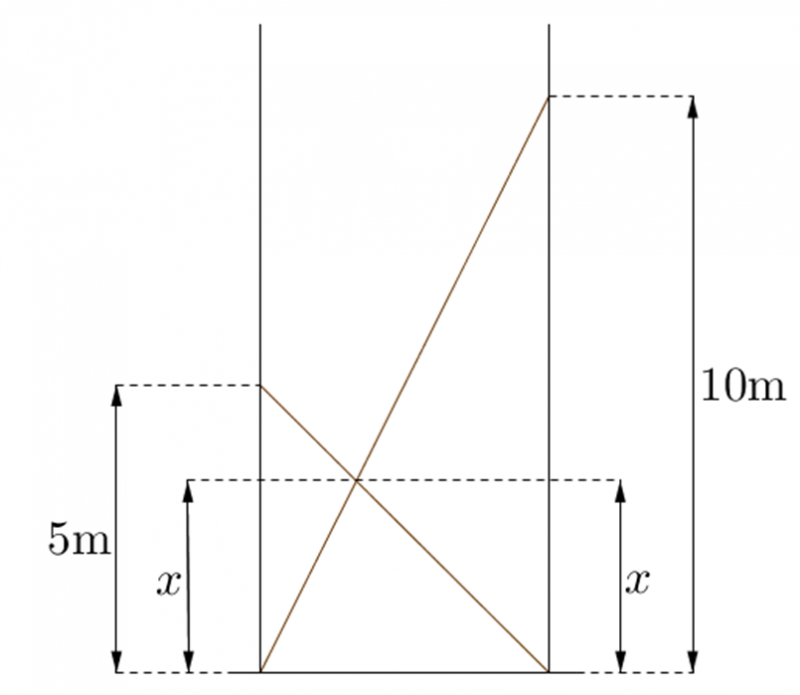
Can you find any pairs of similar triangles in this diagram?
How do these help you to find the value of $x$?
Suppose the first ladder meets the wall at a height of $a$ metres, as in the diagram below.
Image
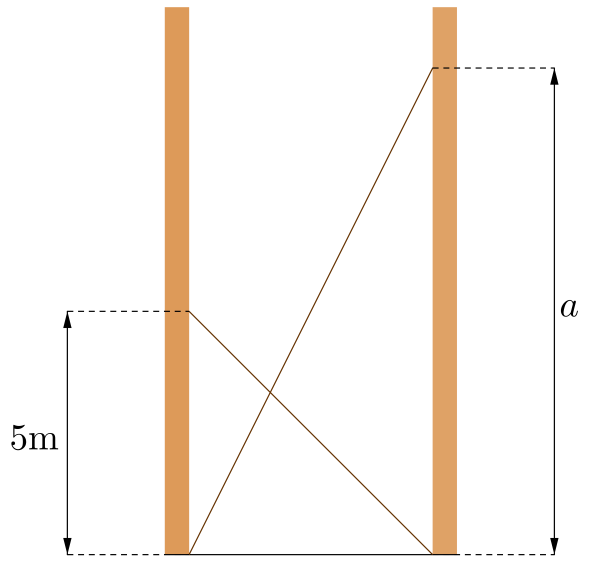
At what height do the ladders cross now?
Suppose the second ladder meets the wall at a height of $b$ metres, as in the diagram below.
Image
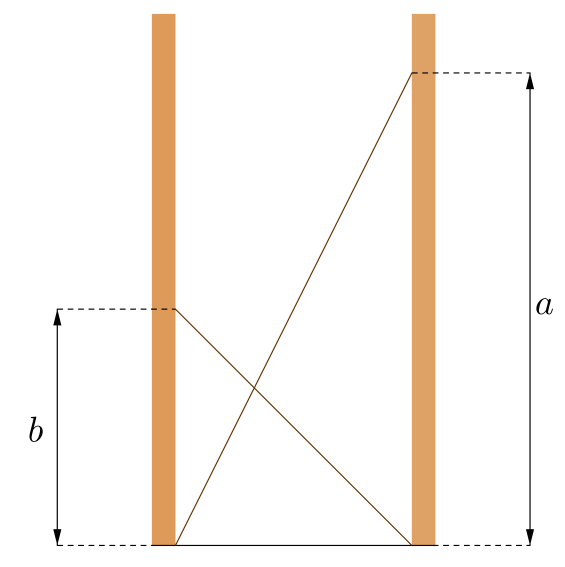
At what height do the ladders cross now?
Student Solutions
Rhiannon sent in this excellent solution:
Image

This means the point of intersection must be halfway between the bottom and the top of each of the ladders, and therefore must be $2.5m$ above the ground.
I expected to need to know how far the bases of the ladders were apart, so not needing to know this surprised me.
Image
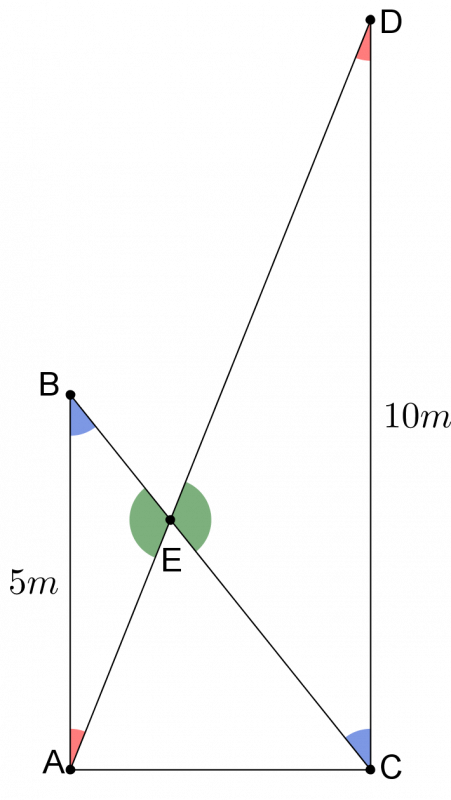
This tells me that the angles $\angle BAD$ and $\angle ADC$ are alternate angles, and therefore equal. Likewise, angles $\angle ABC$ and $BCD$ are also alternate and therefore equal.
$\angle BEA$ and $\angle CED$ are opposite, which means that they are equal. You can see these equal angles in the diagram on the right.
This means that the triangles $ABE$ and $DCE$ have the same angles as each other, and are therefore similar.
This means:$$\frac{AE}{ED}=\frac{AB}{DC}=\frac{5m}{10m}=\frac{1}{2}$$
Therefore $AE = \frac{1}{3}AD$.
This means $E$ is $\tfrac{1}{3}$ of the way up from the floor to $D$, so is at a height of $\frac{10m}{3}=3\tfrac{1}{3}m$
If instead $B$ is $a$ metres above the floor, then:$$\frac{AE}{ED}=\frac{AB}{DC}=\frac{a}{10}$$Therefore $AE = \frac{a}{10+a}AD$.
This means $E$ is the same fraction of the $10m$ above the floor, so is $\frac{10a}{10+a}$ metres above the floor.
If instead $D$ is $b$ metres above the floor, then:$$\frac{AE}{ED}=\frac{AB}{DC}=\frac{a}{b}$$Therefore $AE = \frac{a}{a+b}AD$.
This means $E$ is the same fraction of the $b$ metres above the floor, so is $\frac{ab}{a+b}$ metres above the floor.
Teachers' Resources
This printable worksheet may be useful: Two Ladders
Possible extension: Two Trees
